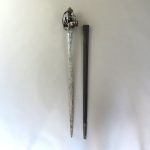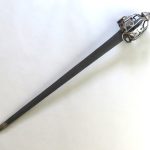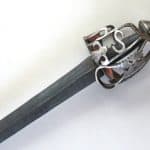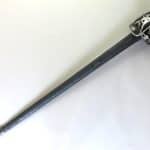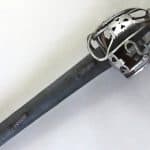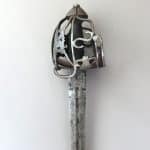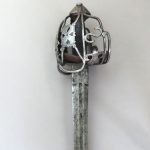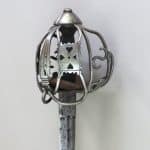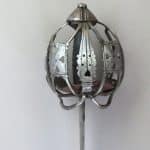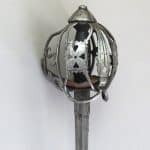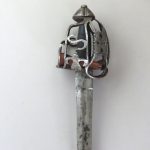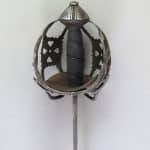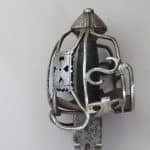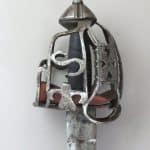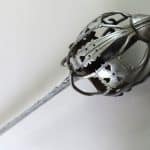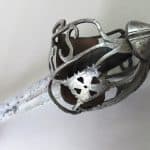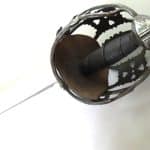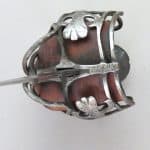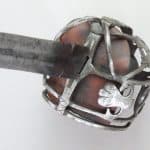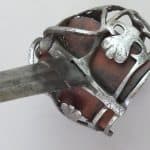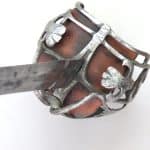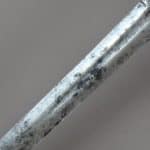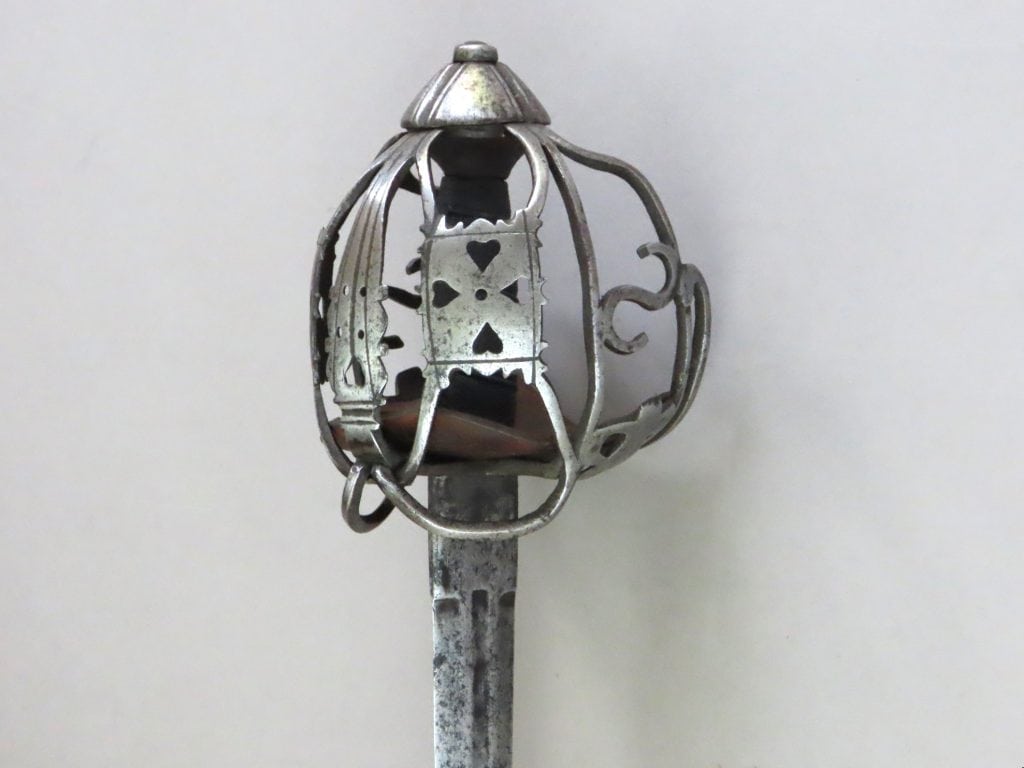
A Scottish Basket Hilted Sword with “S” Bar Hilt and Scabbard circa 1700
To enquire about this itemplease click here
Price: £5,850
Ref: AA.071.23
Item Description
An early Scottish sword mounted with a basket hilt of “S” Bar form dating to the late 17th or turn of the 18th century. The basket guard is a sturdy example wrought with square and oblong section iron structural bars. The sword retains its scabbard which is a rare feature for a sword of this age.
Early “S” Bar Scottish basket hilts of this type are not excessively rare, but they do not appear for sale very often compared to other types. The “S” bar feature is a throwback to the earlier 17th century baskets of ribbon-hilted, and other early Scottish basket forms, which were manufactured with more rudimentary “S” bars which fill the spaces between the side guard bars and rear guard bars.
The guard is formed from square and rectangular section structural bars and mounted with two main frontal guard panels which are pierced with four heart shapes with the points directed to a pierced circle in the middle. The panels are incised with border lines inside each side and the edges are filed with decorative grooves and cusps. A secondary guard panel, to the front, forms the knucklebow which is decorated with similar edges and a single pierced heart at the base, above which four pierced circles are applied and the whole finished with three vertical filed lines which converge towards the top. Lateral lines are filed at the base in more defined form, consisting of a broad groove flanked by narrower incised lines. The side guards are formed with “S” shaped bars with grooved cusped merlons beneath. Two forward loop guards are applied to the front in the usual manner.
The three upper guard arm terminals are tucked into a pronounced groove cut around the lower half of the pommel. The pommel is cone shaped top and bottom. It is mounted with a pronounced circular pommel button on top from which radiate four sets of lines, each with a broad groove in the middle, flanked by narrower incised lines, similar to the grooves at the base of the knucklebow. The broader middle groove in each case is decorated with punched dots which is a 17th / early 18th century feature.
A thick leather liner lies in contour with the base of the basket guard interior. The spirally fluted baluster shaped grip has a hard wood core and is wrapped with shagreen and bound with metal strip.
The scabbard is of early type and a rare survivor. It consists of two slats of wood bound with leather which is stitched together along the middle of the back. Two decorative lines run in parallel along each edge on both sides. The front is mounted with two filed and shaped suspension clips which are also an early feature. Patterns all along this side between the parallel lines are formed from the application of a single small punch in the approximate form of thistles. The chape is a modern replacement.
Of tapering double edged form the blade has a pronounced ricasso extending for extending for 1.5 inches (4 cm) from the hilt. The remnants of vertical line decoration is present near each edge. From the end of the ricasso the blade is of lenticular section and a short central shallow fuller extends for 6.25 inches (16 cm) along the middle of the blade on each side. The remnants of floral decoration at the forte is present on one side.
Generally the sword is in good condition although shows wear. The hilt has maintained its original shape and condition. The blade has light blackened age patches in places as often happens when a blade is left in its scabbard for too long without attention.
For similar swords see Cyril Mazansky, “British Basket-Hilted Swords”, The Boydell Press, 2005, pages 86 to 93.

